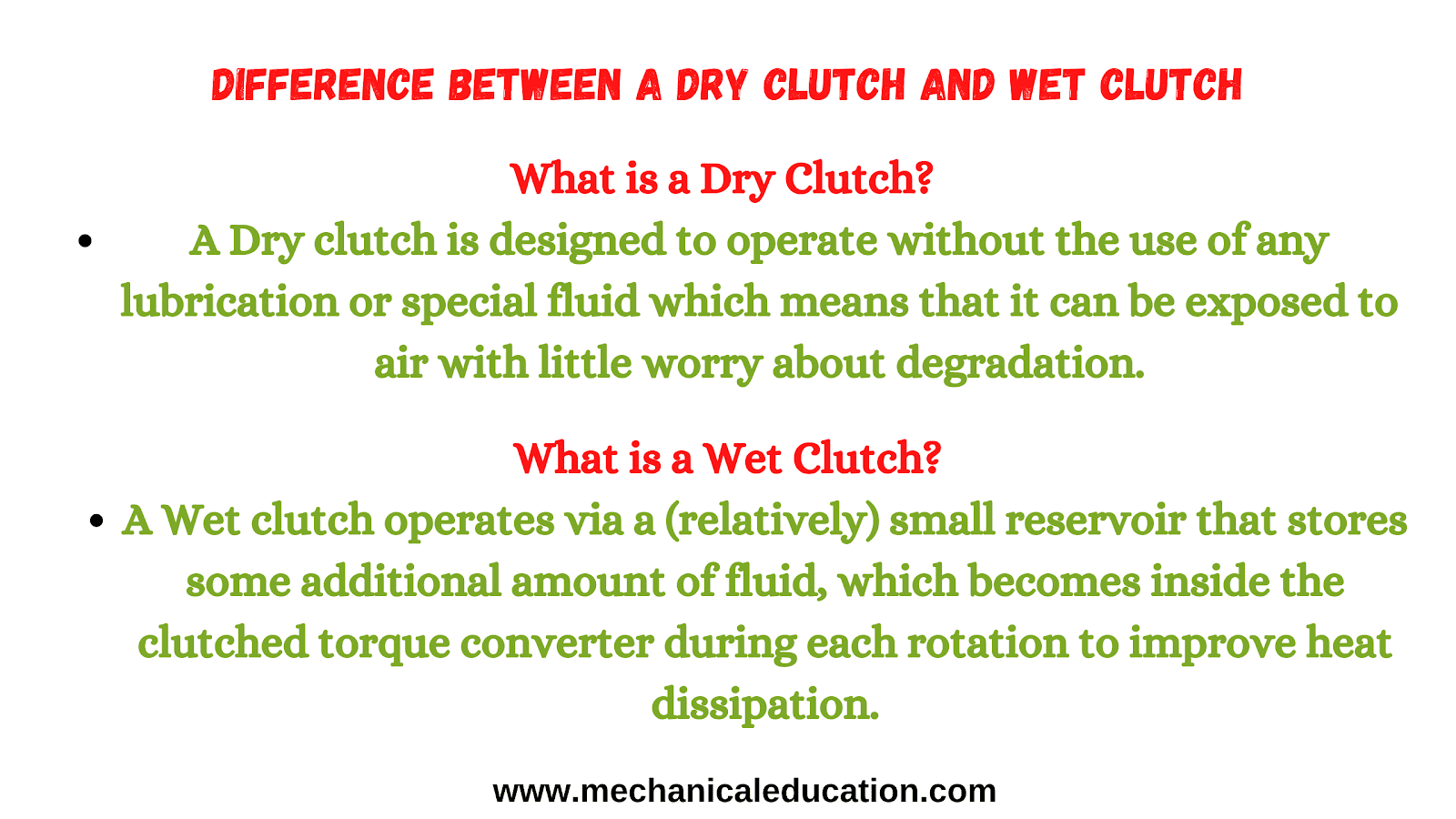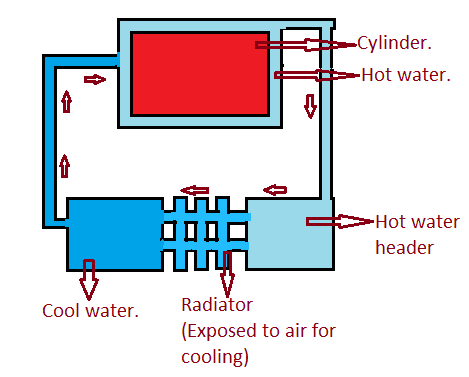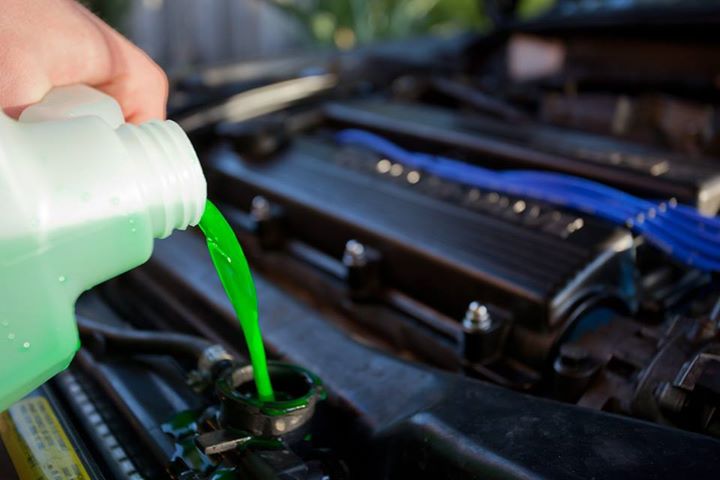Difference between a Dry Clutch and a Wet Clutch:
What is a Dry Clutch?
- A Dry clutch is designed to operate without the use of any lubrication or special fluid which means that it can be exposed to air with little worry about degradation.
- A Dry clutch is low in cost and reliability but they operate with relatively high slip ratios which use more fuel and can deteriorate synchronizing mechanisms such as chains or (in attached engines) crankshaft linkages.
- The advantage of dry clutches comes in relentless torque under nearly all operating conditions.
- Dry clutches are located almost exclusively on bikes, scooters, some three-wheel vehicles, race cars, etc… They allow the engine to idle while the driver walks away from it.
- Dry tensioners can be more durable under certain operating conditions.
- A dry clutch is one with an integrated oil reservoir in it. This reservoir applies pressure to the diaphragm, pushing it against the metal discs for connection between input and output shafts (splined or straight). The advantage of a dry clutch is that there are no volatile fluids like perchloroethylene (“dry-cleaning fluid”!), which usually accompanies wet clutches, making them more environmentally friendly.
What is a Wet Clutch?
- A Wet clutch operates via a (relatively) small reservoir that stores some additional amount of fluid, which becomes inside the clutched torque converter during each rotation to improve heat dissipation.
- Wet clutches typically wear better but require good alignment to avoid overheating.
- Wet clutches are purely mechanical so they require some sort of oil-based lubricant, grease, or other protective layers which prevent exposure to air by preventing oxidation. This protection is most effective when performed at the time an engine is assembled using copper slip or specially made sealants applied by the machine. Oiling after installation will reduce wear but a wet clutch system must still include a hardened surface for gears and bushings with high loads and failure modes that may materialize quickly if exposed excessively.
- Wet clutches are used in sports car racing for example where they do not want the engine to stall during the performance.
- Wet clutches require not only the aforementioned perchloroethylene but also transmission fluid. Wet clutches work via hydraulic operation to provide constant power delivery through variable load situations without pain or discomfort in the transmission lever.
Difference Between Dry Clutch and Wet Clutch:
- A Dry Clutch does not require lubrication but a wet clutch is lubricated.
- A Dry Clutch generates more noise than a Wet Clutch.
- A Dry Clutch is less resistant to wear than a Wet Clutch.
- A Dry Clutch is replaced with a Wet Clutch when there is high friction.
- A Wet Clutch goes between the engine and transmission, while a Dry Clutch connects the transmission to the output shaft of the car.
- A Dry Clutch has less life compared to a Wet Clutch.
- A Dry Clutch required more maintenance than a Wet Clutch.
- A Wet Clutch is smoother than a Dry Clutch.
- A Dry Clutch has high torque transmission than a Wet Clutch.



